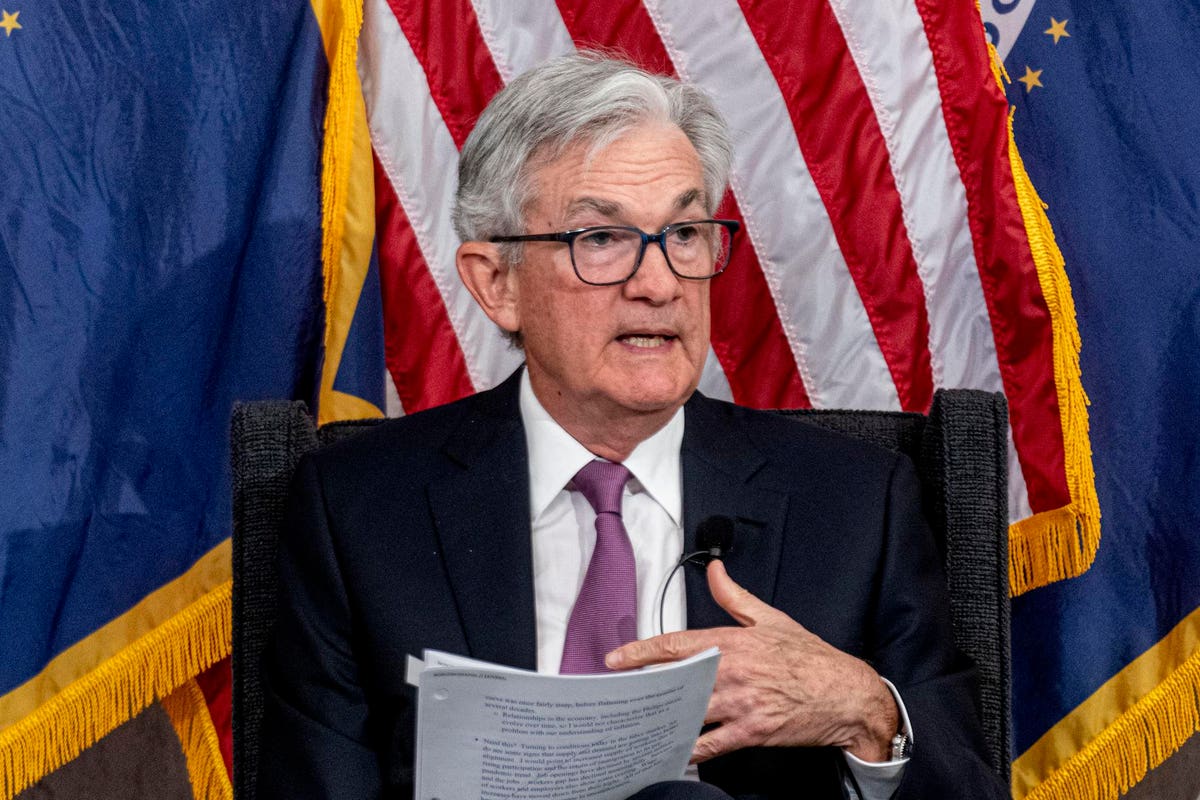the U.S. is seeing some disinflation, but not nearly enough as the Federal Reserve wants. The next CPI report on June 13 coincides with the start of the next Fed meeting to set rates.
The Fed will want more reassurance that core inflation, which has been broadly flat over recent months, is coming down. Yes, headline inflation has come down, but once food and energy costs are stripped out annual core inflation has remained in a 5% to 6% range since December 2022. The key to any move down in inflation will likely be shelter costs since these carry a high weight in the CPI index.
Stubbornly Sideways
Speaking at Jackson Hole last year, Fed Chair Jerome Powell used the phrase “stubbornly sideways” to describe recent moves in U.S. inflation. Since then, headline inflation has fallen sharply. It’s down from an annual peak of over 9% last June to under 5% today. Still not at the Fed’s 2% target, but down nonetheless. However, core inflation has indeed trended broadly sideways. It’s held between 5% and 7% for the past 12 months. Core inflation has broadly trended down since last September, but very slowly when compared to headline inflation.
Shelter Costs
Shelter costs may hold the key to a meaningful drop in core inflation. These costs make up around a third of the CPI index, and over 40% once food and energy are stripped out. This means that shelter is sufficiently large within the CPI to bring down core inflation. So far that hasn’t happened, shelter costs are rising at an 8.1% annual rate according to the CPI’s calculations.
However, housing costs have trended down over the past year on both the CPI’s figures and according to other housing sources. If that trend continues it may bring inflation lower. Simply put, if shelter costs were flat year-on-year rather than running at 8.1% then April’s core CPI inflation would have virtually been at the Fed’s 2% target rather than the report 5.5%. Of course, that change won’t happen overnight, but if the Fed sees shelter costs coming down, that could prompt the Fed reconsider their current position on rates.
The Fed’s Position
Based on stubborn inflation, the Fed appears to have moved to more of a wait and see position for interest rates. Policy makers have hinted that rates could move higher if inflation does not come down, but for now, and at least for the June meeting, the Fed may hold rates steady. The Fed currently does not believe that inflation will come down fast enough. It will take data to change their mind.
The upcoming CPI report is unlikely to mean much for the Fed’s upcoming meeting where holding rates steady seems the most likely outcome based on market expectations and recent statements from Fed officials.
However, if shelter prices do ease that may change the Fed’s perspective. Of course, the Fed is also very focused on the jobs market which, so far, has held up far better than most expected and has allowed the Fed to be very focused on the fight against inflation.
The June CPI report is unlikely to change the Fed’s current intent to hold rates steady at their June meeting. However, if we do see shelter costs and therefore core CPI coming down, then the Fed may start to adjust it’s path for its July and September decisions. Currently the markets think the Fed may hike again at at least one of those meetings, but it’s finely balanced.
Read the full article here












